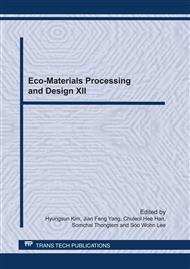p.401
p.405
p.409
p.413
p.417
p.421
p.425
p.429
p.433
A Study on Mechanical and Tribological Properties of Hot Pressed Al2O3/ZrO2/h-BN/TiO2 Composites
Abstract:
Oxide ceramics such as alumina and zirconia are industrially utilized as cutting tools, a variety of bearings, biomaterials, and thermal and corrosion-resistant coatings due to their high hardness, chemical inertness, high melting point, and ability to retain mechanical strength at elevated temperatures. In this research, the effect of other ceramic additives (TiO2) and h-BN within alumina(α-Al2O3) and yttria-stabilized tetragonal (Y-TZP) composite was studied with respect to the mechanical and tribological properties. The lowest coefficient of frction of 0.45 was observed for the ZTA ceramic composite with hBN-TiO2. The highest hardness, fracture toughness and flexural strength were obtained as 15.7GPa, 5.2MPam-1/2, 712MPa, respectively.
Info:
Periodical:
Pages:
417-420
Citation:
Online since:
July 2011
Authors:
Keywords:
Price:
Сopyright:
© 2011 Trans Tech Publications Ltd. All Rights Reserved
Share:
Citation:


